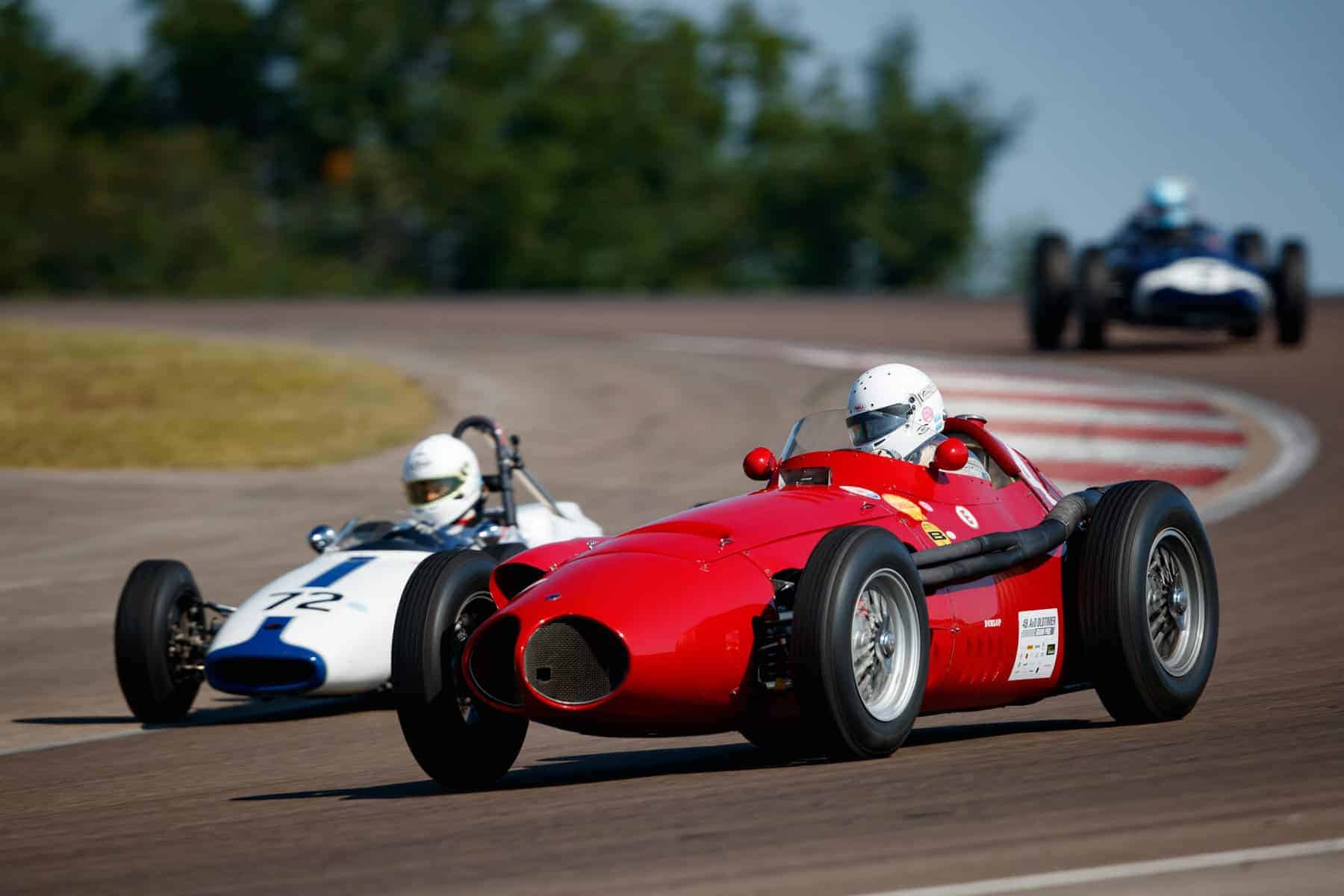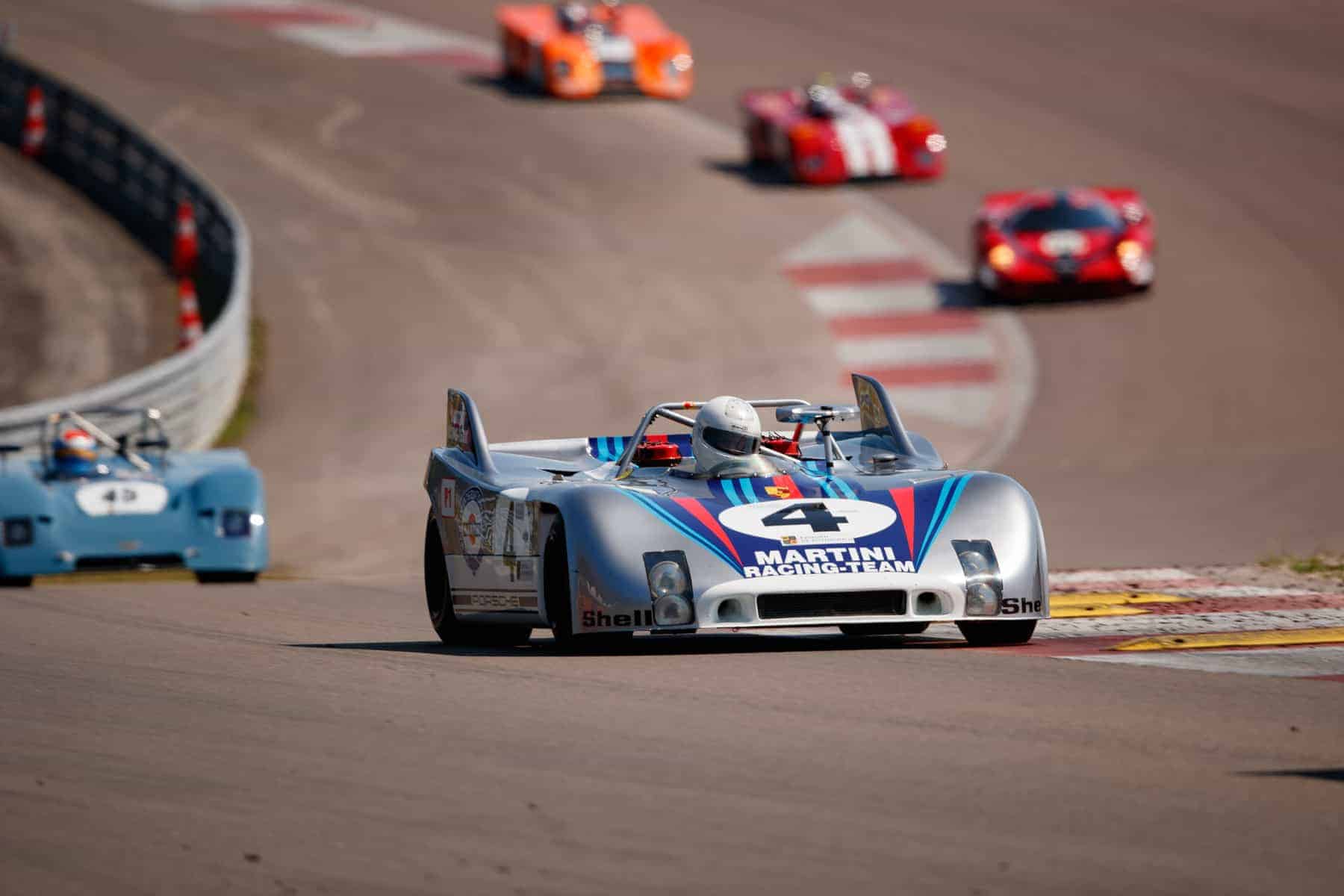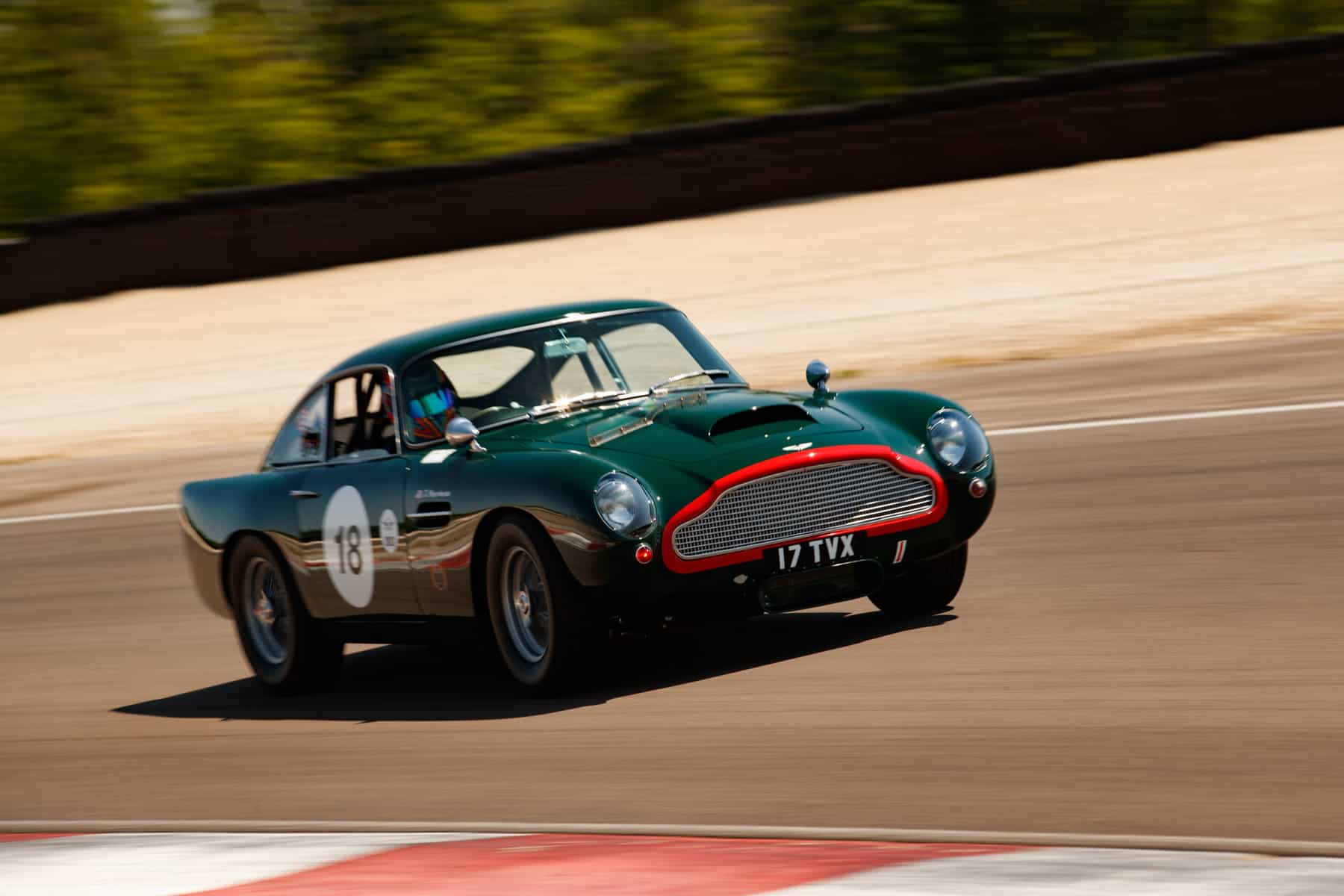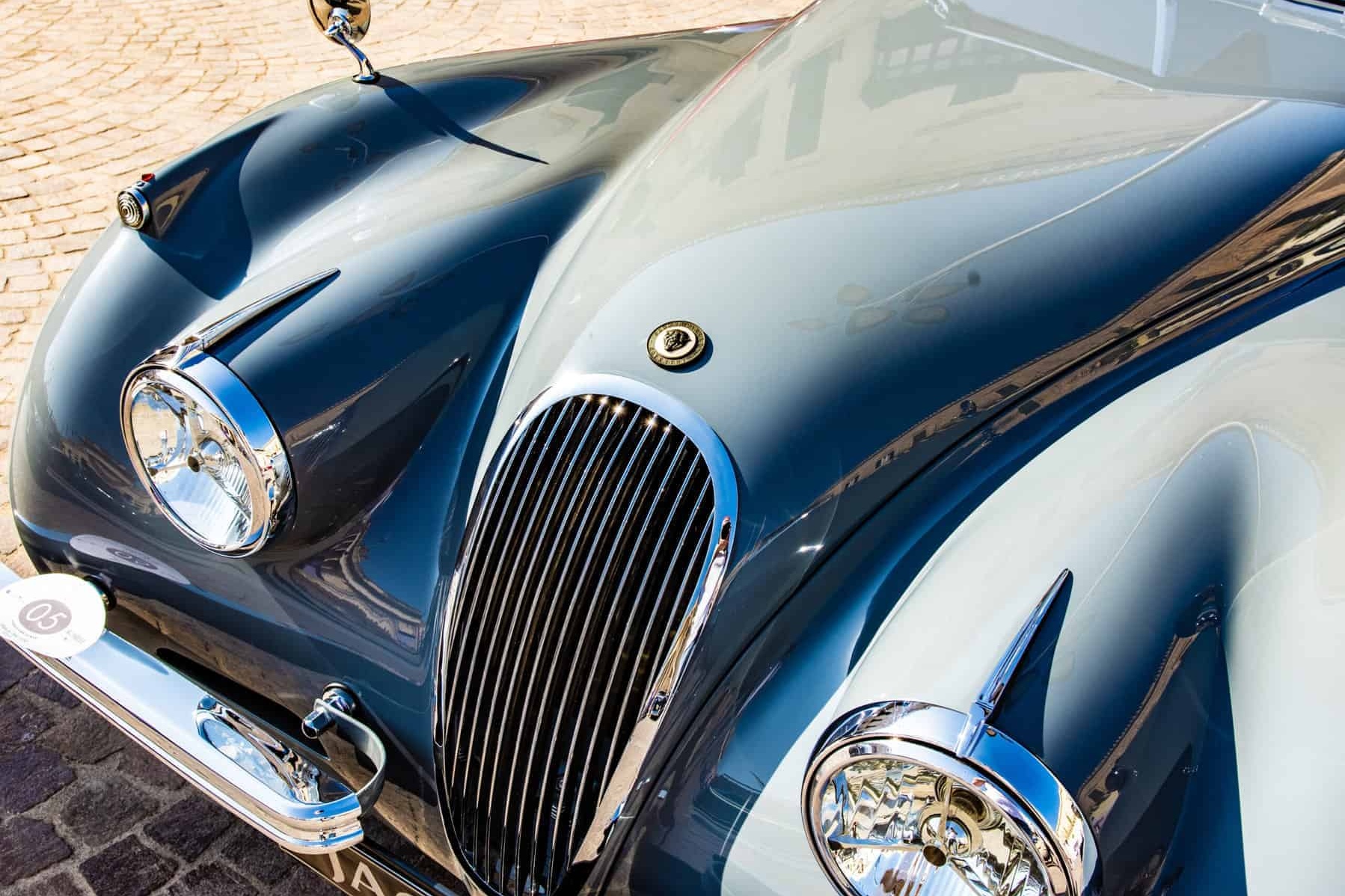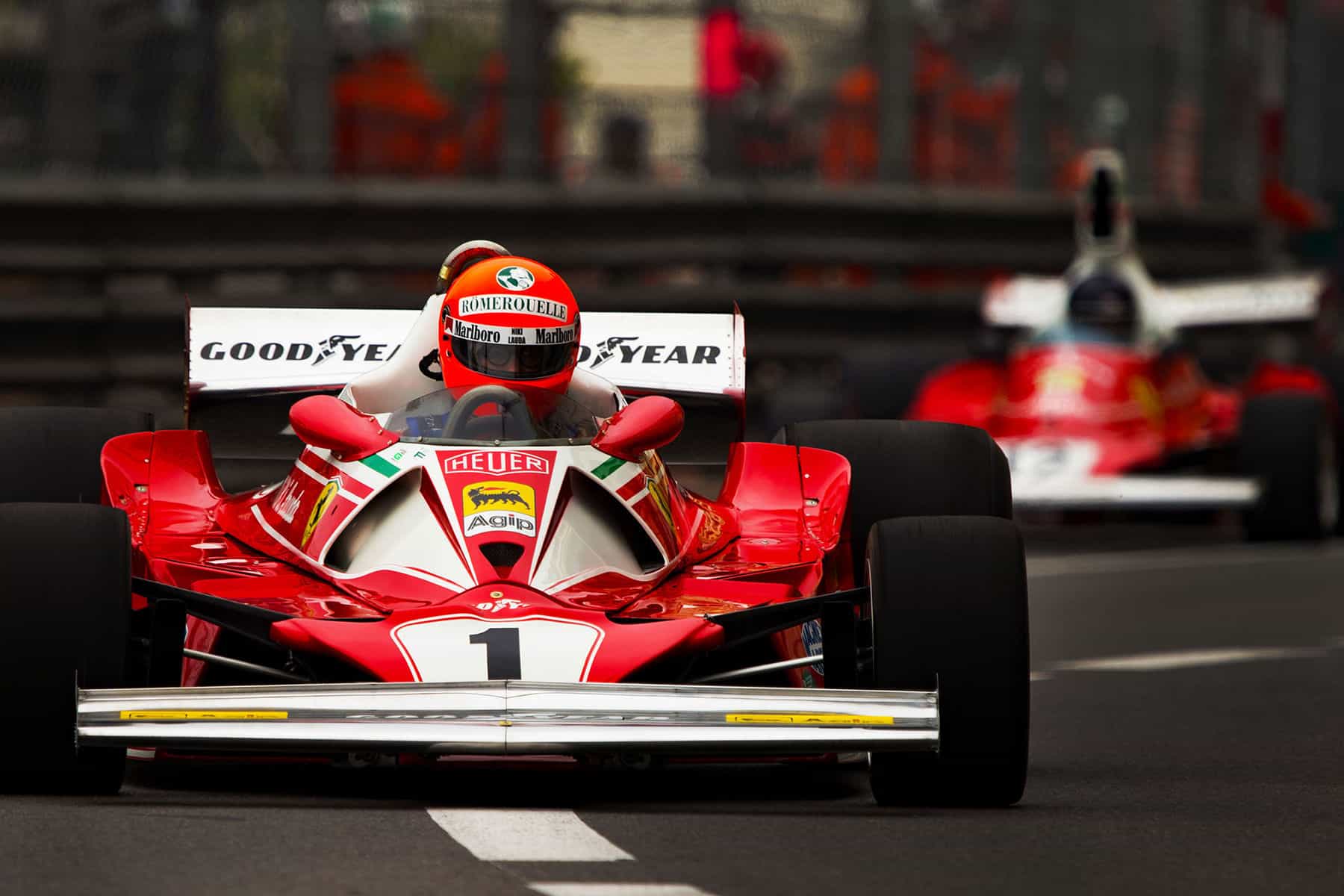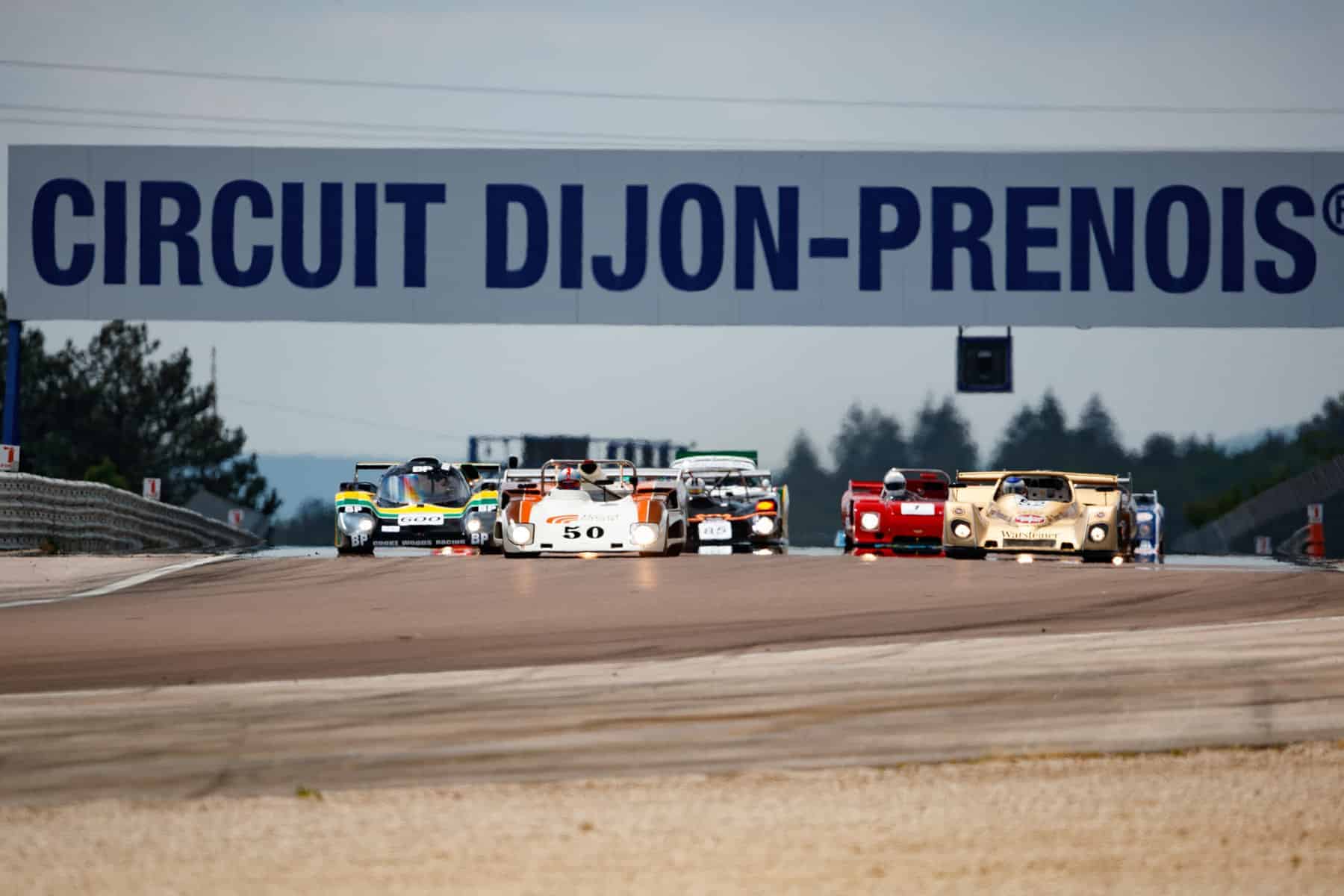
2023 Grand Prix de l’Age d’Or
A closer look at five representatives of racing's golden age
WORDS & IMAGES BY: WOUTER MELISSEN
First held as a support event for the 1964 French Grand Prix at Rouen, the Grand Prix de l’Age d’Or is one of the oldest historic race meetings that is still on the schedule.
Quite literally the celebration of the “golden age” of motorsport, the event was held for the 67th time in 2023. Having previously been hosted by the Montlhéry circuit, the Grand Prix de l’Age d’Or has found a permanent home at the Circuit Dijon-Prenois in the Burgundy region of France east of Paris.
A regular part of the Peter Auto roster since 2014, the event features familiar sports and touring car categories except for the Group C Racing and the Endurance Racing Legends. These modern and very fast machines are not best suited to the more traditional layout of the Dijon-Prenois circuit. Fittingly, their place on the grid is taken by races for Grand Prix and Formula Junior cars. Especially the Historic Grand Prix Cars Association (HGPCA) races are a draw with the field this year consisting of a broad range of machinery from a very early Maserati through to a screaming V8-engined BRM P261.
Enthusiast clubs always form an integral part of the Peter Auto events but at the Grand Prix de l’Age d’Or the turn-out is usually very impressive. The 2023 edition was no exception as the French Corvette club celebrated the 70th anniversary of the iconic American sports car. Around 400 examples of all eight generations were assembled on the in-field of the circuit. Quite a few of these cars were also out on track as part of the club sessions and a special parade to kick off the activities on Sunday morning.
As part of the three-day race schedule, there were a total of 320 competition cars out on track, split in nine race groups. We have taken a closer look at five representatives of racing’s golden age.
Porsche 904 Carrera GTS
Introduced late in 1963, the Porsche 904 or Carrera GTS embodied a mix of classic and modern Porsche design. On one hand, it was the first competition car produced by the German manufacturer that used a lightweight fiberglass body bonded to the chassis. This was famously designed by Ferdinand “Butzi” Porsche. The 904 was, on the other hand, also still powered by a derivative of the Type 547 “Carrera” engine first raced back in 1953. Some of the works cars did feature later six- and eight-cylinder engines during the model’s successful career.
Porsche intended for the 904 to be raced in the GT category, which required that at least 100 examples had to be produced to meet the homologation limit set. Despite its hefty price, there were plenty of takers for the new Porsche racing car. Among them was French gentleman racer Andre Potier, who bought chassis 904-081 through French distributor Sonauto. Potier used the car in road races and rallies and famously finished second in the GT class at the 1965 Reims 12 Hours race.
A crash during the 1966 Rallye Picardie and the resulting fire brought a premature end to its racing career and for many years the damaged car sat in M. Potier’s garage at home. He sold the four cam engine and gearbox immediately, then slowly sold off other parts including the chassis. Porsche specialists Historika were contacted a few years ago and offered the long lost chassis which had sat in a French barn for years. After having the chassis assessed and checked, it was purchased with the few other parts still remaining with the car and a painstaking and meticulous restoration was completed over a two year period. The intent was to race the car again, so the decision was made to install the less fragile Carrera 6 twin plug engine.
At the Grand Prix de l’Age d’Or, Historika fielded the 904 for seasoned historic racers Andrew Smith and Oliver Bryant in the Sixties’ Endurance race. Well suited to the tight track, the light and nimble Porsche did remarkably well against the more powerful Shelby Cobras and Jaguar E-Types. “It is a fantastic car to drive,” Bryant explains: “Very nimble and really good in the first and second sector. We obviously lost out in the final sector against the Cobra Daytonas and E-Types, but it was the closest circuit for us in terms of performance with the bigger cars.”
Smith and Bryant were indeed right in the mix with the much larger-engined car and ended the shortened Sixties’ Endurance race in second overall and as the only two-liter car in the top ten.
Maserati 250 F ‘Piccolo’
Juan Manual Fangio won the 1954 Argentine Grand Prix, which was the opening round of that year’s Formula 1 World Championship. It was the first race of a new 2.5-liter formula and Fangio used the brand-new Maserati 250F. Powered by a 2.5-liter straight-six engine, it would feature on the Grand Prix grids through to the end of this formula, in 1960. After spells with Mercedes-Benz and Ferrari, Fangio returned to the Maserati fold and won the 1957 World Championship with a 250F.
While the 250F was a winner straight out of the box, extensive development work was required to keep the car competitive for so many seasons. The car raced to the World Championship in 1957 was known as the T2, or Tipo 2 and featured a lighter spaceframe chassis. For 1958, a third evolution was prepared. It was known as the T3 or Piccolo, which is Italian for small. True to its name, it was the smallest and lightest version of the 250F yet thanks to a shortened wheelbase. It also featured a distinct, split “shark-nose.”
The 1957 season had been eventful and costly for the Italian manufacturer, which prompted an end to the works effort. Fangio did race this Piccolo in select events, but it was eventually sold with its sister car to American racer Temple Buell. Chassis 2531 is today part of a spectacular collection of two German brothers. One of them raced the Piccolo in the Grand Prix de l’Age d’Or. One of five 250Fs entered, it finished third in class in both HGPCA races.
BMW 528i Group A
The 1982 season saw a complete reshuffle of the regulations with the introduction of Group A, Group B and Group C. Used for touring car racing, the Group A rule set allowed for relatively few modifications. Adhering to the spirit of the regulations, BMW had the strong belief that the two-door 635 CSi used under the previous rules would no longer be eligible. Instead, a competition version of the four-door 528i was prepared together with Swiss specialists Eggenberger.
Taking a more pragmatic approach, Tom Walkinshaw Racing (TWR) managed to get the two-door, V12-engined Jaguar XJ-S homologated for the Group A class. With the minimum weight determined by the engine size, the 2.8-liter-engined BMW was still a close match for the much heavier 5.3-liter-engined Jaguars. Ultimately, the TWR-prepared cars were faster over a single lap, but the BMWs had far superior reliability.
The highlight of the 1982 European Touring Car Championship was the Spa 24 Hours. A Jaguar had qualified on pole position, but it retired after just nine hours due to an accident. This opened a path to victory for the large number of 528is entered. Eventually they filled eight of the top ten positions including the first six. The example entered at Dijon-Prenois was the runner up, driven in period by Jean-Pierre Jarrier, Thierry Tassin and famous French movie star Jean-Louis Trintignant.
Trintignant was also the nephew of the former Formula 1 race winner Maurice Trintignant and his presence prompted the very novel installation of an on-board camera. The story has it that the camera system caused an electrics failure prompting an unscheduled pit-stop thwarting any hope of victory for the car. It nevertheless finished second and the footage from the cockpit is very impressive. The BMW was recently restored and was on its first outing with the current owner.
Porsche 908/03
“When taking the wheel of this car, I could not help thinking of the progress made in the last ten years, remembering that this Porsche had the same 3-liter capacity as my Le Mans-winning Ferrari Testa Rossa of 1960, but exactly twice its power-to-weight ratio… In fact, the power-to-weight ratio must be very near the figure for the 917, but somehow it does not feel quite as ferocious, perhaps because the 3-liter has not got the colossal medium-range torque of the 4.5-liter flat-12.”
This was the account of Belgian journalist and Le Mans winner Paul Frère when he drove this very Porsche 908/03 for his 1971 book The Racing Porsche – A Technical Triumph. It is unheard of today, but he was allowed to test the 908/03 and 917 back-to-back, in April of 1970 when they were still brand new. The two cars were part of Porsche’s two-pronged World Championship effort with the eight-cylinder-engined 908/03 substituting for the more powerful but heavier 917 at the Targa Florio and the Nürburgring 1000 km.
Designed specifically for the two tightest and twistiest races of the season, the 908/03 drew inspiration from the successful Porsche hill-climb racers. The compact machine has virtually no front and rear overhangs with all the mechanicals concentrated within the short wheelbase. Mounted amidships is a three-liter flat-eight engine that was rated at 350 bhp. The 908/03 did exactly what it was designed for, winning the Targa Florio and Nürburgring 1000 km races in 1970.
Liveried in Martini colors, this 908/03 is chassis 002, which was the first one completed. It was extensively tested in period but not raced in anger. Made famous by the Paul Frère book, this car was eventually rebuilt by Porsche specialist Dale Miller. It is now raced by its Swiss owner and Marc de Siebenthal, who is a Swiss Porsche authority. Right at home at Dijon-Prenois, the 908/03 was among the fastest cars in the Classic Endurance Racing 1 field, eventually finishing third overall.
Aston Martin DB4 GT “Lightweight”
One of the most striking cars to compete in two “Greatest’s Trophy” races during the Grand Prix de l’Age d’Or was this famous Aston Martin DB4 GT. It was acquired new by John Ogier for his Essex Racing Stable team and was raced by some of the greatest drivers of the era: Roy Salvadori, Stirling Moss, Jim Clark, and Innes Ireland.
The “GT” was the competition version of the DB4 road car. Combining Italian styling with a twin-cam straight-six, the DB4 had been launched to great acclaim in 1958. Designed to take on the dominant Ferrari 250 GT, the DB4 GT featured a thinner gauge aluminium body, further tuned engine and shortened wheelbase. Chassis DB4GT/0151/R, or “17 TVX,” was one of a handful that were even further lightened and sold to prominent customers like John Ogier.
Raced extensively in period, the Lightweight DB4 GT was owned for many decades by American Aston Martin enthusiast Jim Freeman. He cherished the car and used it in over one hundred events from the early 1980s. Now owned by another American collector, it was raced at Dijon-Prenois by the talented Kyle Tilley. Sadly, issues prevented him from reaching the finish in the first race and he did not make the start in the second.
Held under beautiful blue skies, the 2023 Grand Prix de l’Age d’Or provided a great show for the sixteen thousand spectators. The Peter Auto series will continue at the end of August with the Dix Mille Tours at Paul Ricard. There is no time for a break yet as many of the same competitors will also take part in the Le Mans Classic, which is also organized by Peter Auto.

